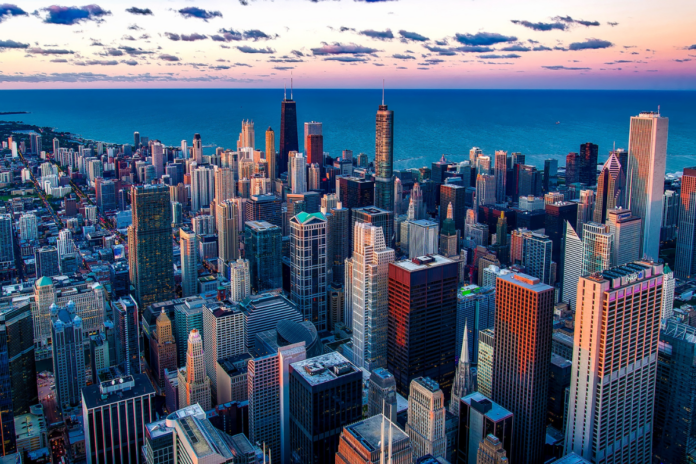Urban environments are characterized by high population density and extensive variety of built structures. These environments are a fusion of residential, commercial, and public spaces, often connected by a complex network of roads and transportation systems. With such diversity and density comes a unique set of challenges regarding space utilization, safety, and crowd management.
Space and boundaries are fundamental concepts in urban planning and design. Space refers to the physical areas within an urban environment, while boundaries define and separate these spaces. Boundaries can be natural, like rivers and hills, or artificial, such as roads, walls, and bollards. Bollards are short posts widely used in urban areas to control or direct road traffic, protect pedestrians, and define space within crowded environments. Despite their relatively discreet presence, their design and location can significantly impact human behavior and the overall perception of space.
The Psychology of Space
The role of space in human psychology dictates how we relate to others, how we perceive our social status, and influences our sense of comfort and security. In the context of urban environments, urban spaces can catalyze or inhibit social interactions, affect our stress levels, and influence our sense of individual and communal identity. Physical boundaries play a subtle yet significant role in shaping the experience of urban space. By controlling and directing the flow of traffic, they can create a sense of order amidst the bustling city life, providing a subtle feeling of safety and structure.
Physical Boundaries in Urban Environments
Physical boundaries in urban settings refer to tangible markers or barriers that delineate different areas within a city. These can occur naturally, such as rivers or hills, or be man-made like walls, fences, streets, or removable bollards. These physical boundaries serve multiple purposes – they can assist in guiding traffic, managing pedestrian use, protecting exclusive or vulnerable areas, or even contribute to aesthetic appeal.
Impact of Boundaries on the Urban Experience
Boundaries give definition to spaces, leading to the creation of distinct zones in a city, such as residential, commercial, or recreational areas. They greatly impact our perception and experience of the city. They can influence our sense of familiarity, safety, convenience, and overall engagement with the environment. Beside their primary function in traffic and crowd control, they can convey important information, regulate access, and even contribute to a sense of order and tranquility in bustling city spaces.
The Effect of Bollards on Human Behavior
On a psychological level, the presence of bollards can significantly influence human behavior. They foster a sense of order and predictability in the urban chaos, subtly guiding pedestrians and motorists, fostering a sense of safety and reducing stress. For example, a 2014 study conducted in Melbourne’s business district found that removing bollards in some areas created confusion, while the addition of bollards in overly busy zones streamlined pedestrian movement and reduced congestion. This and similar studies reinforce the idea that well-implemented physical boundaries like bollards can play a significant role in shaping human behavior in urban settings, guiding crowd control, and enhancing urban spaces’ usability.
Perception of Space in Crowded Areas
Crowded spaces in cities, such as marketplaces, public transport hubs, or popular streets, are ever-present features of urban environments. The perception of these spaces, and the comfort or discomfort they engender, depends on density, accessibility, and the delineation of space. Crowdedness is not merely about the quantity of people; it’s also about how individuals perceive space. This perception can shift based on several factors, like personal space preference, cultural influences, and the physical boundaries present.
Barriers & Their Relation to Overcrowding
Physical boundaries like bollards can shape our perception of crowded spaces. By effectively delineating and managing space, these barriers can create feelings of order and structure, even in densely populated areas. In the absence of clear boundaries, spaces might feel chaotic and even more crowded. Judicious use of bollards and similar barriers can help mitigate the feeling of overcrowding by providing subtle guidance to movement, segregating different types of traffic and enhancing overall safety. Thus, our perception of space, the physical boundaries that define it, and feelings of overcrowding are linked in a complex interplay that shapes our experience of urban life.
Future Trends
Understanding the psychology of space and boundaries provides invaluable insights that can shape these future trends positively. It can push for the creation of urban spaces that are not only aesthetically pleasing but are also mindful of the psychological comfort and safety of city dwellers. Integrating such understanding in planning and design strategies can foster more inclusive, functional, and psychologically sound environments. For instance, by optimizing the use and design of physical boundaries like bollards, cities could effectively manage crowded areas while reducing the psychological stress associated with overcrowding. Identifying effective strategies now will pave the way for cities to remain bustling hubs of activity, while still maintaining a sense of order, safety, and community.
The seemingly insignificant components of urban design like bollards can deeply influence human behavior, the perception of space, and the experience of city life. By understanding the psychology of space and applying it to the urban context, we can prevent the challenges of overcrowding and craft spaces that balance functionality with well-being. Future urban planning and architecture will greatly benefit from this understanding, paving the way for more inclusive, efficient, and psychologically sound cities.






